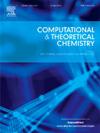Development of SiC monolayer for detection of SO3 and NF3 hazardous gases based on DFT calculations
IF 3
3区 化学
Q3 CHEMISTRY, PHYSICAL
引用次数: 0
Abstract
Identifying intrinsically selective materials towards gas molecules can dramatically simplify designing selective and sensitive sensors in order to detect these gasses. Researchers have recently explored monolayers with group III–IV elements as encouraging materials for sensing various gasses. Within this piece of research, we undertook first-principles DFT computations for exploring the gas adhesion attributes of a silicon carbide monolayer (SiCML). The adhesion energies, adhesion distances, adhesion nature and strength as well as the charge transports were examined. The changes in workfunction and conductance were also computed to analyze their prospects in electronic- and workfunction-based gas sensor applications. For this purpose, the adhesion of NF3, H2S, CO, SO3 and CO2 was investigated, and it was found that the SiCML was sensitive to these gasses, especially SO3 and NF3 had a chemical adhesion with adsorption energy −0.56 and −0.75 eV, respectively. Also, the workfunction value of SiCML were changed about 18.39 % and 17.94 % after SO3 and NF3, respectively. In addition, NF3 adsorption changed the band gap of SiCML from 2.29 to 0.38 eV. Furthermore, the recovery time for NF3 at 600 K is about 4.48 s, which showed the sensitive and selective response of NF3 in the SiCML.

求助全文
约1分钟内获得全文
求助全文
来源期刊

Computational and Theoretical Chemistry
CHEMISTRY, PHYSICAL-
CiteScore
4.20
自引率
10.70%
发文量
331
审稿时长
31 days
期刊介绍:
Computational and Theoretical Chemistry publishes high quality, original reports of significance in computational and theoretical chemistry including those that deal with problems of structure, properties, energetics, weak interactions, reaction mechanisms, catalysis, and reaction rates involving atoms, molecules, clusters, surfaces, and bulk matter.
 求助内容:
求助内容: 应助结果提醒方式:
应助结果提醒方式:


